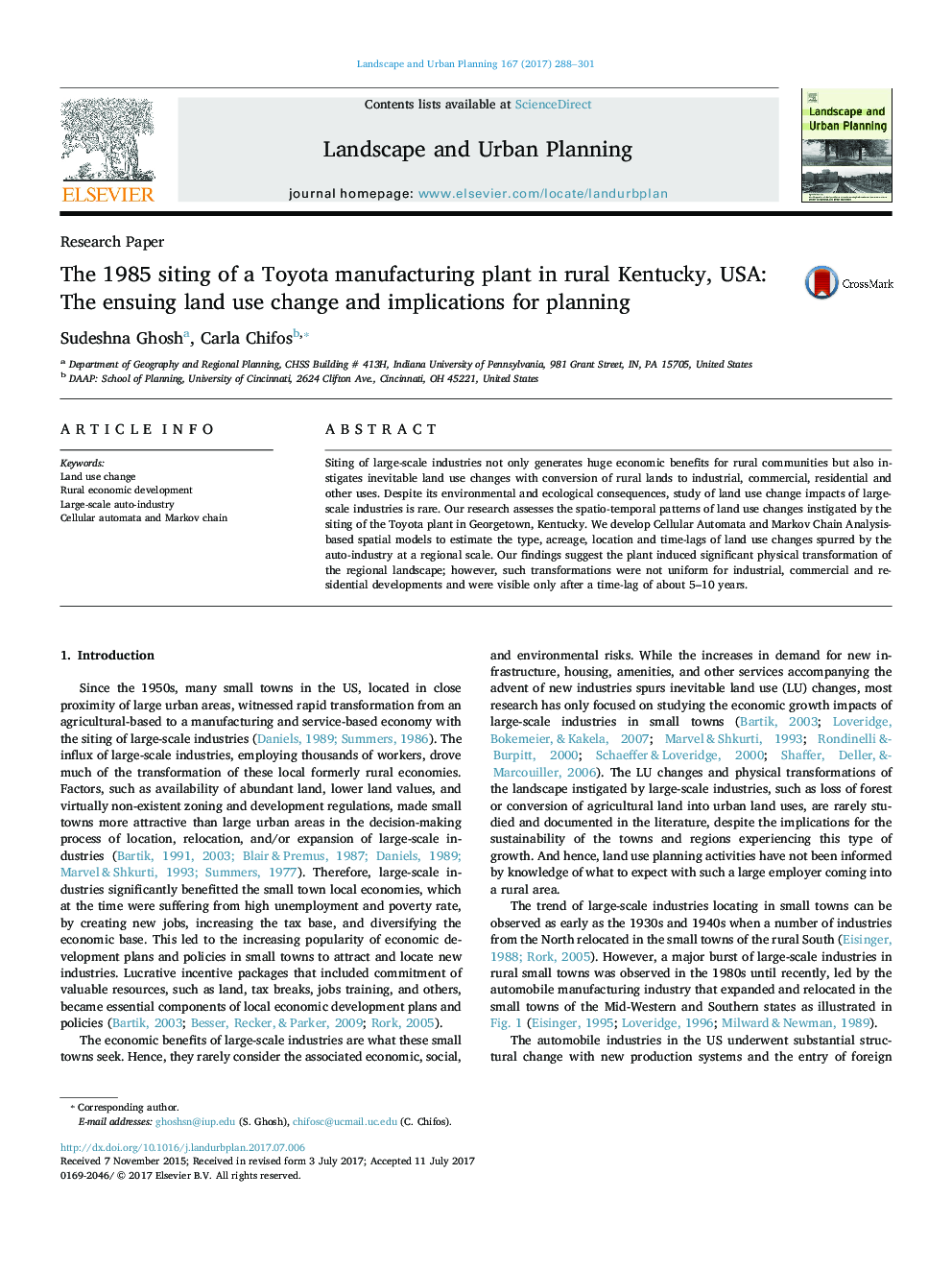| Article ID | Journal | Published Year | Pages | File Type |
|---|---|---|---|---|
| 5114960 | Landscape and Urban Planning | 2017 | 14 Pages |
Abstract
Siting of large-scale industries not only generates huge economic benefits for rural communities but also instigates inevitable land use changes with conversion of rural lands to industrial, commercial, residential and other uses. Despite its environmental and ecological consequences, study of land use change impacts of large-scale industries is rare. Our research assesses the spatio-temporal patterns of land use changes instigated by the siting of the Toyota plant in Georgetown, Kentucky. We develop Cellular Automata and Markov Chain Analysis-based spatial models to estimate the type, acreage, location and time-lags of land use changes spurred by the auto-industry at a regional scale. Our findings suggest the plant induced significant physical transformation of the regional landscape; however, such transformations were not uniform for industrial, commercial and residential developments and were visible only after a time-lag of about 5-10 years.
Related Topics
Life Sciences
Agricultural and Biological Sciences
Ecology, Evolution, Behavior and Systematics
Authors
Sudeshna Ghosh, Carla Chifos,
